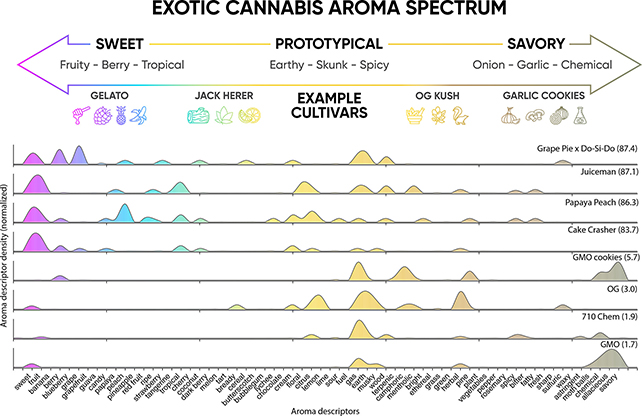It’s difficult to miss or mistake the distinctive smell of cannabis. Now scientists have discovered more about where the aroma comes from – and it’s not, as had been thought, all down to the naturally occurring chemical compounds known as terpenes in the plant.
Two research groups had previously identified volatile sulfur compounds (VSCs), also known as thiols, as being responsible for the ‘skunky’ smell of weed. Of particular importance is the molecule 3-methyl-2-butene-1-thiol (321MBT).
Researchers at the terpene distributor Abstrax Tech recently lead a study using a variety of techniques on have used a variety of techniques on 31 cannabis extracts to investigate their smells further – techniques including gas chromatography, mass spectrometry, and flame ionization detection to look closely at the chemicals in weed.

The team also identified 321MBT as significant, going on to better classify the different types of VSCs and their relationships to different cannabis scents – from citrus and tropical to sweet and grape-like.
“We identified a new class of tropical volatile sulfur compounds (VSCs) that are major contributors to certain varieties with a strong citrus or tropical fruit aroma, while skatole (3-methylindole), a highly pungent compound, was identified as a key aroma compound in savory/chemical varieties,” write the researchers in their published paper.
While terpenes do play a role in the smell of weed, it’s these combinations of VSCs and the 321MBT molecules that seem to be the most important when it comes to cannabis giving off the odor that it does, including the common skunky smell.
This 321MBT molecule is responsible for the pungent smell that beer gives off as well after it has been exposed to sunlight, and it also plays a part in giving skunk spray its particular smell.
Although the thiol compounds made up a very small amount (less than 0.05 percent) of the analyzed samples, they have a big impact on the odor of cannabis. It’s partly because of these low concentrations that the VSCs have been overlooked before.
One chemical compound the researchers highlighted was skatole – found in human feces, as well as other places – that created a savory garlic smell alongside the more recognizable weed aroma.
The Abstrax Tech team is hoping that its research leads to ways to selectively breed cannabis strains to come with particular smells attached, perhaps lessening the familiar skunky smell along the way.
“These results provide a greater understanding of the chemical composition of cannabis beyond terpenes and how these compounds contribute to the unique aromas that it produces,” write the researchers.
“Furthermore, this catalog of compounds and their contributions to the scent of cannabis provides a new opportunity to classify varieties using key desirable aroma attributes.”
The research has been published in ACS Omega.









